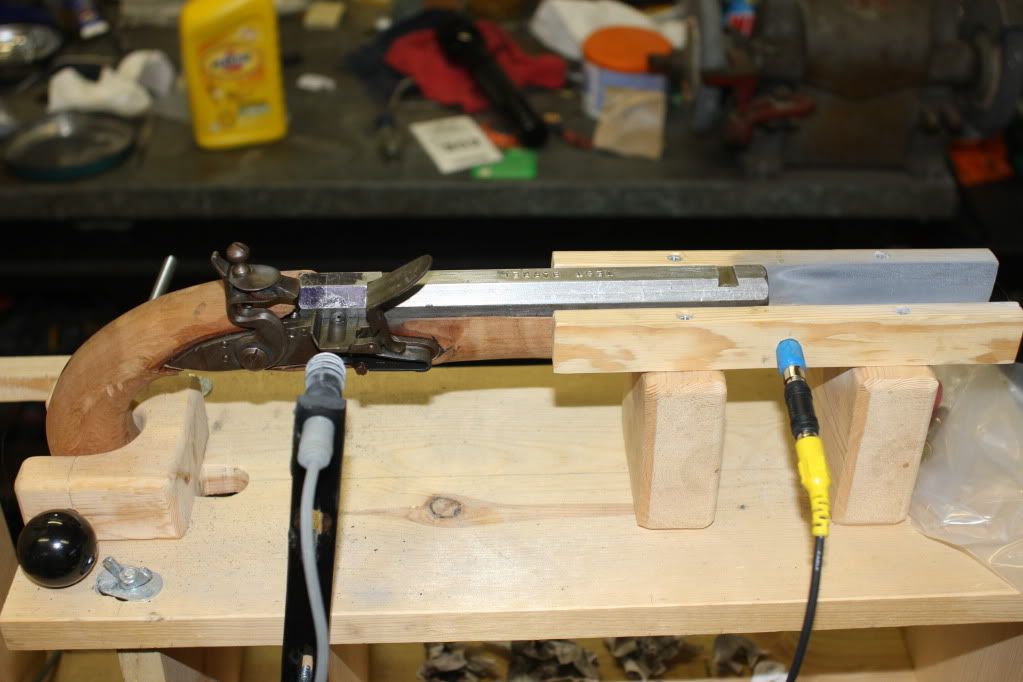paulvallandigham
Passed On
- Joined
- Jan 9, 2006
- Messages
- 17,537
- Reaction score
- 89
Ernie; As you know I have a lifetime history with music as a player, too. As I indicated about my feelings of the first club member's comments about me shooting a percussion gun rather than my flintlock- being kind-- this was based on the fact that all he was reporting was what he "HEARD", or thought he heard. He was down the firing line from me to my right, so he could not have SEEN my gun fire, being a LH flintlock.
However, when he grilled me on how I loaded and primed my gun, Then Watched the gun fire a couple of times, and persisted in his comments, I had to give him the benefit of the doubt. When other members watched my gun fire, and made similar comments on what they SAW, rather than what they heard, I began to take real notice.
Later when I tuned Pete's lock, and he reported getting the same comments on visual observations, that I had gotten at my club, and he had discussed the issue with Phil, I began to be persuaded that something was possible.
These observations match the comments made in the 1978-79 Guns & Ammo Black Powder Annual article on Tuning flintlocks, which involves an interview Wiht Robert Traurig, of St. Paul, Minnesota, a friend of Dave Ripplinger, the owner of Track of the Wolf. The article was written by Buz Fawcett, and describes in detail how Bob tunes flintlocks to provide the fastest ignition.
I have no stake in this argument. I believe that my differences with Larry Pletcher's work is highly technical, and a matter of deciding when ignition begins in the barrel- not when the ball exits the barrel. I respect Larry's work, and freely advise folks to view it for what it is.
I simply do not believe that we have found the proper equipment to use to test the speed of ignition in a flintlock. Until we do, comparing flintlock speed of ignition to that of percussion locks remains an "apples vs. Oranges " dispute. :hatsoff:
However, when he grilled me on how I loaded and primed my gun, Then Watched the gun fire a couple of times, and persisted in his comments, I had to give him the benefit of the doubt. When other members watched my gun fire, and made similar comments on what they SAW, rather than what they heard, I began to take real notice.
Later when I tuned Pete's lock, and he reported getting the same comments on visual observations, that I had gotten at my club, and he had discussed the issue with Phil, I began to be persuaded that something was possible.
These observations match the comments made in the 1978-79 Guns & Ammo Black Powder Annual article on Tuning flintlocks, which involves an interview Wiht Robert Traurig, of St. Paul, Minnesota, a friend of Dave Ripplinger, the owner of Track of the Wolf. The article was written by Buz Fawcett, and describes in detail how Bob tunes flintlocks to provide the fastest ignition.
I have no stake in this argument. I believe that my differences with Larry Pletcher's work is highly technical, and a matter of deciding when ignition begins in the barrel- not when the ball exits the barrel. I respect Larry's work, and freely advise folks to view it for what it is.
I simply do not believe that we have found the proper equipment to use to test the speed of ignition in a flintlock. Until we do, comparing flintlock speed of ignition to that of percussion locks remains an "apples vs. Oranges " dispute. :hatsoff:





